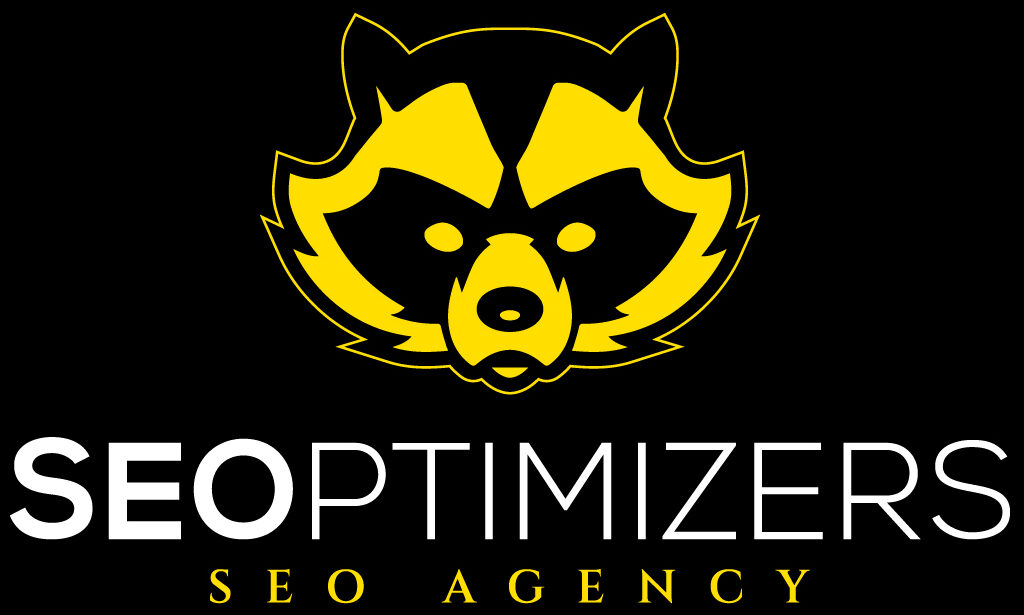Discover the best AI tools for every task in 2025 — a concise press-style overview that maps practical use cases, vendor strengths, and adoption playbooks for entrepreneurs and product teams. This article highlights tools that accelerate creativity, streamline R&D, and improve decision-making while keeping governance and ROI measurement front and center. You’ll meet a fictional startup, Nova Threads, whose founder Maya tests different stacks to launch faster, cut costs, and keep product quality high. Short, actionable paragraphs guide you from tool selection to scaled implementation.
Across marketing, design, engineering, and operations, AI platforms now act as collaborators rather than mere utilities. Expect integrated agents, personalization at scale, and analytics-driven workflows that reduce time-to-market and operational drag. This piece blends practical examples and vendor comparisons so you can pick the right solutions for specific team goals.
- How to choose the best AI tools for every task in 2025
- Top AI tools for content, design, and marketing in 2025
- AI for engineering, data, and business intelligence: tools that scale products
- Automating meetings, productivity, and customer ops with AI assistants
- Implementing AI safely, measuring ROI, and scaling across teams
How to choose the best AI tools for every task in 2025: selection criteria and real startup experiments
Choosing the right AI stack begins with clear goals. When Maya at Nova Threads needed to shorten product copy cycles and analyze textile patents, she defined three measurable outcomes: reduce content creation time by 50%, accelerate patent research turnaround to 72 hours from two weeks, and automate customer triage to free 10 hours per week for the team. That start-up test illustrates why clear objectives are crucial before evaluating solutions.
Selection should rest on five pillars: functionality, integration, cost predictability, trust and safety, and measurable ROI. These are not abstract checkboxes; they map directly to how teams will operate day-to-day. For example, a content team will prioritize editing workflows and SEO integration, while an R&D group focuses on data ingestion and intellectual property search capabilities.
Practical steps to evaluate AI platforms
Follow a rapid evaluation loop: define use case, shortlist tools, run a week-long pilot, measure outcomes, and pick a winner. Nova Threads ran two pilots simultaneously: one with a writing stack (a brand-voice tool plus SEO assistant) and one with an R&D agent for patent discovery.
- Define success metrics (time saved, revenue impact, error reduction).
- Test integration with existing systems (CRM, CMS, code repos).
- Assess data governance and compliance (encryption, retention policies).
- Estimate total cost of ownership including training and maintenance.
- Review vendor track record and trust indicators (case studies, certifications).
| Criteria | Why it matters | Example question |
|---|---|---|
| Functionality | Determines day-to-day utility | Can it generate brand-consistent long-form content? |
| Integration | Impacts adoption speed | Does it sync with our CMS and analytics stack? |
| Trust & Safety | Limits legal and reputational risk | How does it handle PII and IP data? |
Macro data supports this approach. Industry reports now show enterprise adopters see efficiency gains in the 20–40% range when AI is targeted at discrete workflows. That aligns with Maya’s pilots: she shaved 60% off copy production and reduced patent discovery time by two-thirds through a dedicated R&D agent.
Tools such as ToolFinder and NextGenAIFinder surfaced during the pilot as discovery layers that help shortlist options by capability and price. For companies that prefer curated marketplaces, platforms like AIGeniusHub and BestAIToolsNow provide vendor comparisons that accelerate vendor selection.
| Use case | Recommended first-step tool | Expected outcome |
|---|---|---|
| Long-form content | Jasper or brand-centric alternatives | 50–70% faster drafts |
| Patent & R&D search | PatSnap Eureka | Faster discovery, fewer blind spots |
| Customer triage | Tidio AI or live chat pairs | Reduced response time, higher CSAT |
When assessing options, also validate vendor updates and platform roadmaps. Frequent, transparent updates show long-term commitment. Check independent reports — for instance, major SEO shifts and algorithm updates influence content strategy; keep an eye on trusted sources and updates such as recent search algorithm analyses to align your content AI strategy with search engine expectations. This alignment helps your tools generate not just text, but discoverable text.
Checklist for pilots:
- Run A/B tests comparing human-only vs. human+AI workflows.
- Monitor quality metrics, not just speed.
- Gather qualitative feedback from users during the pilot.
Key insight: Choose AI tools by outcome-first criteria, run short pilots, and validate impact against measurable KPIs before full adoption.

Top AI tools for content, design, and marketing in 2025: practical picks and workflows that win
Marketing teams in 2025 rely on integrated stacks that combine writing, image generation, video, and scheduling. Maya’s marketing lead used a three-layer approach: a content generator for first drafts, a design assistant for visuals, and a scheduler for distribution. This created a pipeline that moved from idea to published post in a single day.
Key platforms dominate different steps: writing tools for fast drafts, image and video generators for creative assets, and social schedulers to automate distribution. Combining these components reduces handoff friction and maintains consistent brand voice.
Effective toolchain examples
- Writing & SEO: Jasper or Copy.ai generate drafts and CTA variations. Pair with SEO plugins for keyword optimization.
- Design: Canva Magic Studio for rapid templates and Midjourney or Adobe Firefly for bespoke visuals.
- Video: Synthesia and Runway for quick training clips and short-form promotional content.
| Category | Top tools in 2025 | Primary benefit |
|---|---|---|
| Writing | Jasper, Copy.ai, Writesonic | Brand voice and SEO alignment |
| Image generation | Midjourney, GPT-4o image features | Custom visuals at scale |
| Video | Synthesia, Runway, OpusClip | Faster creation and repurposing |
Maya’s team used BestAIToolsNow and AIChoiceSpot to shortlist creative tools by output style. For example, when launching a seasonal collection, they generated hero images with Midjourney, refined them in Canva, and then created short social clips with OpusClip. The workflow produced a 35% increase in social engagement over previous manual campaigns.
Lists of practical tactics:
- Repurpose a single long-form video into 6-8 short clips using OpusClip to maximize reach.
- Use design templates from Canva Magic Studio to keep brand consistency across channels.
- Automate headline variations with copy tools, then A/B test on landing pages for CTR lifts.
| Workflow step | Tool | Time saved |
|---|---|---|
| Draft blog post | Jasper | 60–80% faster |
| Create hero image | Midjourney + Canva | From hours to minutes |
| Produce social clips | OpusClip | Rapid repurposing |
SEO alignment matters. Tools that produce content must be judged by discoverability. Follow search best practices and monitor algorithm changes such as those covered in industry analysis like recent core update reports to ensure AI-generated content is optimized for evolving ranking signals. Combining a writing assistant with SEO checks prevents poor organic performance.
When selecting visual AI, consider style control and IP rights. Midjourney and GPT-based image tools offer varying degrees of prompt control; run internal tests to ensure outputs are brand-safe. For video, Synthesia speeds training and onboarding, while Runway supports creative teams with advanced editing models.
Checklist for content teams:
- Define brand style guide and encode it into AI templates.
- Pair generation tools with editorial oversight and SEO validation.
- Automate publishing and repurposing to maximize reach.
Key insight: Compose toolchains that connect writing, design, and distribution to reduce friction and protect search visibility—use marketplaces like ToolFinder or SmartSelectAI to match tools to specific creative outcomes.
AI for engineering, data, and business intelligence: tools that scale products and accelerate R&D
Engineering and product teams adopt AI differently: they prioritize code accuracy, reproducibility, and data-driven decisioning. Nova Threads’ engineering lead integrated a code-assist solution plus a BI stack to shave release cycles and improve product analytics. The combination allowed the startup to run experiments faster while maintaining code quality and reliability.
Key platforms in this space include GitHub Copilot X, Tabnine, Replit Ghostwriter for code productivity; Tableau with embedded AI or Power BI for analytics; and PatSnap Eureka for patent intelligence and R&D discovery.
How R&D and engineering use AI day-to-day
Developers use AI for boilerplate generation, refactors, and automated code review. Product managers use BI tools to generate hypotheses from telemetry, then translate those into experiments. R&D teams use agents to discover technical trends and patent landscapes, which reduces duplication and accelerates innovation cycles.
- Code generation and pair programming reduce rote tasks and improve iteration speed.
- AI-powered analytics surface anomalous trends and forecast user behavior.
- R&D agents synthesize patents and papers into actionable competitive insights.
| Function | Tool | Impact |
|---|---|---|
| Code assistance | GitHub Copilot X, Cursor | Lower debugging time |
| Analytics | Tableau + Einstein, Power BI AI | Faster insights and forecasts |
| R&D intelligence | PatSnap Eureka | Accelerated patent discovery |
Example case: PatSnap Eureka helped Nova Threads identify a narrow patent class related to sustainable dyes. That insight led Maya’s team to pivot a sourcing strategy, avoiding potential infringement and positioning the product as innovation-led. The AI agent compressed weeks of patent review into hours and suggested adjacent technologies worth licensing.
Data teams must validate AI outputs. Use a “human-in-the-loop” for any model recommendations that affect product decisions. Maintain versioned datasets and keep clear provenance records, especially when models train on internal telemetry or third-party data.
- Instrument experiments with telemetry that AI analytics can consume.
- Guard models with test suites to avoid cascading errors.
- Keep a rollback plan for any automated production changes driven by AI.
| Guardrail | How to implement | Tooling |
|---|---|---|
| Data lineage | Track dataset versions | BI platforms + internal catalog |
| Model validation | Unit tests and biases checks | Testing frameworks + human review |
| IP safety | Patent scans before release | PatSnap Eureka |
For technical teams considering adoption, platforms like TaskSmartAI and TaskWizardAI have emerged as specialized utilities that translate natural-language specs into reproducible code scaffolds. These tools reduce initial dev friction but require rigorous review before shipping to production.
Key insight: Pair code-assist tools and AI analytics with strict validation and provenance checks to scale product decisions without increasing operational risk.

Automating meetings, productivity, and customer operations with AI assistants: workflows that save time
AI-driven meeting assistants and productivity tools become the backbone of modern operations. Nova Threads adopted AI note-takers, calendar optimizers, and customer chatbots to reclaim focus time and reduce administrative overhead. The result: team members reported an average five hours saved per week, which matched broader surveys reporting similar savings across professions.
Leading tools in this space include Fathom for meeting transcription and summaries, Notion AI for knowledge management, Reclaim and Clockwise for scheduling, and Tidio or Hiver for customer support automation.
Real-world productivity playbook
Maya configured Fathom to record weekly product reviews and auto-extract action items. She then used Notion AI to aggregate those items into a weekly roadmap with ownership and deadlines. The seamless handoff from meeting capture to task creation removed manual note consolidation from the workflow.
- Automated transcription and summarization reduce context loss from meetings.
- Smart scheduling tools create focus blocks and limit fragmentation.
- AI contact routing triages customers to the right agent or knowledge article.
| Operational area | Tool | Benefit |
|---|---|---|
| Meetings | Fathom, Otter.ai | Clear summaries and action items |
| Scheduling | Reclaim, Clockwise | Protected focus time |
| Customer ops | Tidio AI, Hiver | Faster responses and automated tagging |
To help readers operationalize choices, here’s a compact comparison toolbox that maps common needs to best-fit tools and key evaluation notes.
Découvrir les meilleurs outils IA pour chaque tâche (2025)
Filtrez, triez et comparez rapidement. Texte en français, facile à modifier.
| Sélection | Besoin | Outils recommandés | Pourquoi | Considérations clés | Actions |
|---|
Comparateur rapide
Sélectionnez jusqu’à 3 outilsPractical checklist for teams:
- Standardize meeting formats so AI can extract consistent action items.
- Set privacy rules for recordings and transcriptions.
- Integrate chatbots with CRM to preserve conversation history and context.
| Metric | How to measure | Target |
|---|---|---|
| Time saved | Employee time logs pre/post adoption | 5+ hours/week per user |
| Response time | Customer support ticket SLA | Reduce by 30–50% |
| Action completion | Rate of closed items from meeting notes | Increase closure rate by 20% |
To remain search- and market-aware, align productivity content outputs with search updates. For instance, when SEO ranking patterns shift, update internal playbooks and content templates; resources like industry analyses can help you prioritize content refreshes across the team.
Key insight: Automating meeting capture, scheduling, and triage yields measurable time savings—but success depends on integration and governance to keep data useful and secure.
Implementing AI safely, measuring ROI, and scaling across teams: governance, metrics, and change management
Adopting AI at scale requires governance and a clear measurement framework. Nova Threads established a three-tier rollout: pilot → controlled rollout → enterprise deployment. For each phase, they maintained documentation on training data, model behavior, and incident response. This approach reduced surprises and helped justify further investment.
Start with a simple ROI model: quantify time saved, incremental revenue, and risk reduction. McKinsey-style analyses often use efficiency estimates between 20–40% to justify investments; translate those percentages into staffing and revenue impacts for your organization.
Governance and risk mitigation
Governance includes data lineage, model validation, access controls, and incident protocols. Nova Threads established a central AI policy, specifying which tools could access customer data, how long transcriptions are retained, and which teams must review model outputs. This reduced compliance friction when they integrated several external tools.
- Document data sources and model training provenance.
- Set access tiers—restrict PII and sensitive telemetry to vetted systems only.
- Mandate human review for any decision with legal or reputational impact.
| Governance area | Required action | Tooling examples |
|---|---|---|
| Data retention | Define retention windows and purge policies | Internal DLP + vendor settings |
| Model bias checks | Regular audits and fairness tests | Validation frameworks and human audits |
| Incident response | Escalation and rollback procedures | Runbooks and playbooks |
Measuring ROI requires baseline metrics. Track pre-adoption baselines like content production time, ticket response SLA, and patent search cycles. After deployment, run statistical comparisons and report monthly. Use dashboards to tie AI improvements to business KPIs—conversion lift, time-to-market, or cost-per-lead.
- Define baseline metrics for each use case.
- Measure impact in defined windows (30/90/180 days).
- Report results to stakeholders and iterate on tool configurations.
Cultural change matters. Provide training, set realistic expectations, and highlight early wins. For Nova Threads, a 10-minute demo of a new assistant during the weekly all-hands produced rapid adoption because team members saw immediate time savings. Also use curated vendor resources and community case studies; directories like AIDiscoverPro, PrimeAITools, and NextGenAIFinder help teams discover vetted use cases and integration tips.
| Metric | Baseline | Target after AI |
|---|---|---|
| Content turnaround | 3 days | 1 day |
| Patent search time | 2 weeks | 72 hours |
| Customer SLA | 24 hours | 12 hours |
Finally, keep monitoring search and platform changes as they will influence content generation and visibility. Regularly review technical SEO and algorithm shifts using trusted analyses like industry posts on core updates so AI-produced content aligns with updated ranking criteria. Reassess your stack annually and after any major algorithm or compliance change.
Key insight: Deploy AI with a governance-first mindset, measure real business impact, and support adoption with training and clear playbooks to scale confidently.
For more detailed case studies and vendor comparisons, revisit the tools and pilot playbooks above and consult curated marketplaces such as AIChoiceSpot and SmartSelectAI for continuous discovery and benchmarking.
Further reading on search updates and implications for AI-generated content

